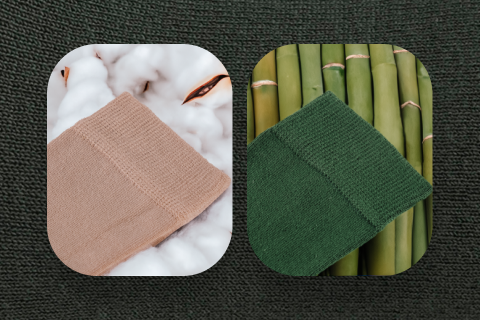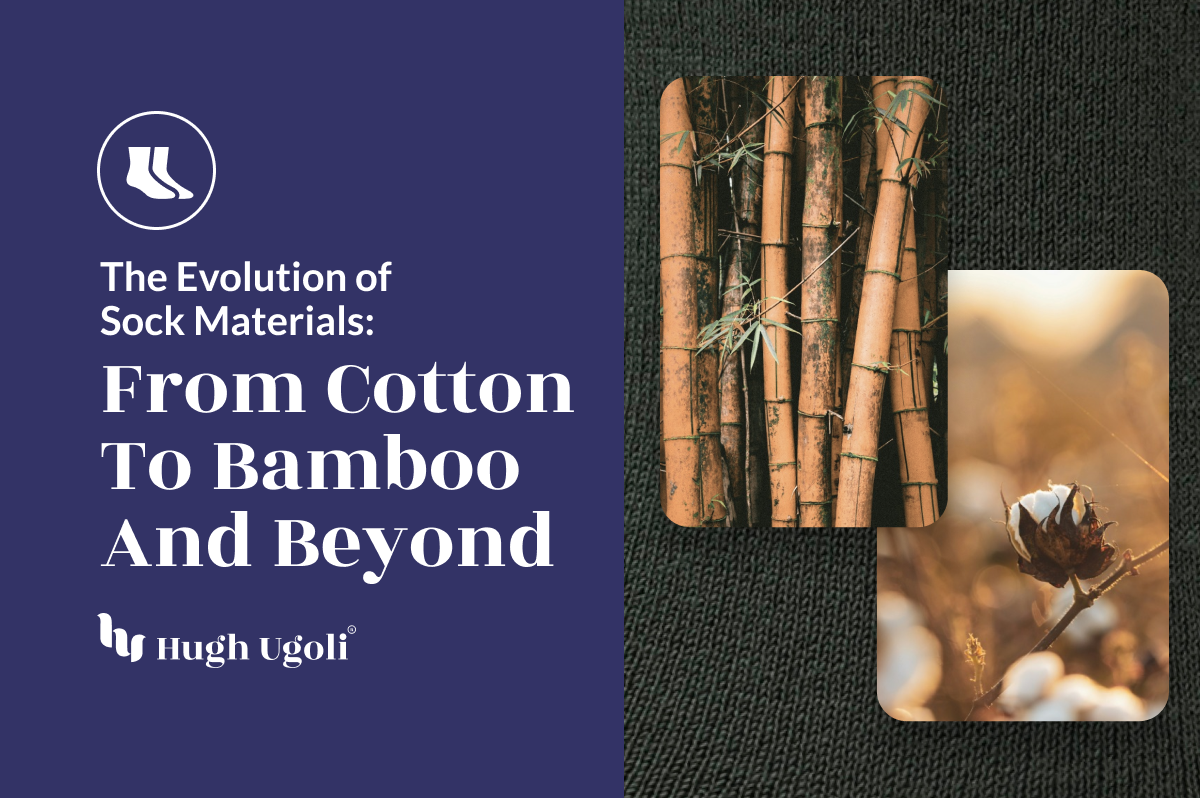The journey of sock materials through the ages is a fascinating story of innovation, adaptation, and the quest for comfort and durability. What began as a humble cotton garment has now evolved into a sophisticated product leveraging the benefits of both natural and synthetic fibers.
A Brief History of Cotton Socks
Cotton has been the cornerstone of sock manufacturing for centuries. Its natural softness, breathability, and absorbent qualities made it a go-to material for everyday wear. However, cotton's tendency to absorb moisture made it less ideal for more rigorous activities or cold weather conditions, where wet socks can become uncomfortable and lead to blisters or other foot ailments.
Advantages of Cotton:
- Natural and breathable
- Soft feel against the skin
- Hypoallergenic, suitable for sensitive skin
Limitations:
- Absorbs and retains moisture
- Longer drying times
- Can lose shape over time
The Introduction of Synthetic Fibers
The development of synthetic materials represented a significant shift in the sock industry. Synthetic fibers like polyester transformed the landscape of sock production by offering enhanced durability and moisture control.
Benefits of Synthetic Material:
- Moisture-wicking capabilities, drawing sweat away from the skin
- Quick-drying, essential for active lifestyles
- Retains shape and elasticity, providing a snug fit
However, fully synthetic socks sometimes fell short in terms of comfort and breathability, leading to the development of blended fabrics that aim to combine the best of both worlds.
The Rise of Blended Fabrics
Blending natural fibers like cotton with synthetic fibers resulted in socks that offer the comfort of cotton with the performance benefits of synthetics. Such innovations have led to the creation of moisture-wicking, breathable socks suitable for a variety of activities and conditions.
The Best of Both:
- Blends that offer cotton's comfort with synthetics' functionality
- Improved overall performance for everyday wear and active use
- A more versatile sock for diverse lifestyles
The first part of this blog has set the stage by exploring the traditional use of cotton and the integration of synthetic fibers into sock production. In the next installment, we'll delve into the latest advancements, including eco-friendly materials and high-tech fabrications that cater to specific needs such as moisture control and temperature regulation, perfect for sensitive skin and outdoor activities.

Embracing Eco-Friendly Materials: Bamboo and Beyond
The sock industry has seen a significant shift toward sustainability with the introduction of eco-friendly materials like bamboo. This renewable resource has gained popularity for its softness, durability, and natural moisture-wicking properties.
Why Bamboo is Making Strides:
- Eco-Friendly: Grown without pesticides and harvested sustainably.
- Moisture-Wicking: Naturally draws moisture away from the skin, keeping feet dry.
- Antibacterial: Bamboo's natural properties help reduce odor and prevent bacterial growth.
Bamboo socks cater to those with active lifestyles and those who prioritize environmentally conscious decisions, such as opting for materials that offer a smaller carbon footprint.
The Marvel of Merino Wool
Merino wool has emerged as a superstar in the world of high-quality socks. Unlike traditional wool, Merino is fine and soft, not itchy, making it ideal for sensitive skin. Its unparalleled ability to regulate body temperature makes it perfect for a variety of climates and outdoor activities.
The Wonders of Merino Wool:
- Temperature Regulation: Keeps feet warm in cold weather and cool in the heat.
- Moisture Control: Exceptional at managing moisture, preventing dampness.
- Odor Resistance: Natural properties of Merino wool reduce the need for frequent washing.
Merino wool socks represent a blend of nature's ingenuity and modern technology, providing comfort and performance that synthetic materials alone cannot match.
The Future of Socks: High-Performance Meets High Fashion
Today's socks are not only about functionality but also about making a fashion statement. The integration of high-quality materials like bamboo and Merino wool with synthetic fibers is producing socks that are both high-performance and high-fashion.
Blending Function with Style:
- Versatile Designs: Socks for all occasions, from intense hiking trips to casual days out.
- Sustainable Fashion: Consumers can enjoy stylish socks without compromising ethical values.
- Innovative Features: Brands are constantly seeking to innovate with features like targeted cushioning and seamless construction for maximum comfort.
As we wrap up our two-part series on the evolution of sock materials, it's clear that the industry is undergoing a comfort revolution. Socks have transitioned from basic necessities to complex garments that offer a multitude of benefits for different lifestyles and preferences.
In the ever-evolving world of fashion and sustainability, Hugh Ugoli Socks stands at the forefront, providing a variety of options that cater to the eco-conscious and style-savvy individual. Consider the Men's Lightweight Bamboo Diabetic Ankle Socks as a testament to our commitment to eco-friendly fashion. Not only do they offer the natural benefits of bamboo fabric, but they also ensure comfort for those with sensitive needs. For the professionals who demand both style and substance, our Lightweight Diabetic Bamboo Ankle Socks for Women are unmatched in providing temperature-regulated comfort without compromising on sophistication.
To understand the full impact of choosing environmentally responsible materials, we invite you to read our dedicated article, "Eco-Friendly Foot Fashion: Why Bamboo Socks Are Taking Over" which delves deeper into the benefits of selecting sustainably sourced products. By choosing Hugh Ugoli Socks, you're not just making a statement of style; you're also contributing to a more sustainable future, one step at a time.
By choosing socks made from advanced materials like bamboo and Merino wool, consumers can enjoy superior comfort, functionality, and style while also making a positive impact on the environment. The future of socks looks bright, with continued innovations that promise to elevate everyday wear to new levels of sophistication and sustainability.
















